Thailand operation. How Thailand entered the war on the side of Japan and what it led to
Thailand before the start of the war was a powerful enough state by Asian standards. To begin with, it was the only country in Indochina that avoided a colonial fate. Thailand (formerly Siam) was never colonized by any of the European powers, unlike its neighbors Burma and Malaya, which were under British control, and Vietnam, Laos and Cambodia, colonized by the French. The buffer position of Thailand between the colonial possessions of France and Great Britain played a significant role in maintaining its political independence. On the other hand, in the late 19th century, the Siamese kings began to make serious efforts for the military and economic modernization of the country. Thus, King Chulalongkorn or Rama V (1853-1910), who ruled 1868-1910, sought to establish friendly relations with the Russian Empire, in which he saw a patron in the struggle to preserve independence. The King of Siam even visited Russia, met with Emperor Nicholas II. One of the sons of Rama V, Field Marshal Chakrabon Puvanat (1883-1920) not only received a military education in Russia, but also married Russian citizen Ekaterina Desnitskaya.
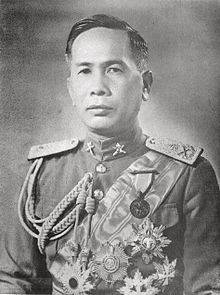 By 1940. Thailand managed to create a very combat-ready armed forces. Their real potential was tested in the French-Thai war 1940-1941. At this time, the post of Prime Minister of Thailand was held by Major-General Plac Pibunsongram (1897-1964), appointed to this position in 1938 year. He was quite an extraordinary person, combining the qualities of a clever politician and a good military leader. Back in 1914, Plec (in the photo) graduated from the Military Academy Culachlaklao with the rank of second lieutenant and was distributed to artillery. During World War I, he served as a foreign intern in France - also in artillery units, and then graduated from the military academy at Poitiers and Fontainebleau. The career of a young officer was promoted by a revolution that took place in Siam in 1932 and led to the restriction of royal power. After the revolution, Plec Pibunsongram was appointed deputy artillery commander of the royal army with the rank of lieutenant colonel, and then made a colonel and was appointed deputy army commander. In 1934, he became Minister of Defense. By the way, it was Pibunsongram who initiated the renaming of Siam to Thailand, which followed in the 1939 year.
By 1940. Thailand managed to create a very combat-ready armed forces. Their real potential was tested in the French-Thai war 1940-1941. At this time, the post of Prime Minister of Thailand was held by Major-General Plac Pibunsongram (1897-1964), appointed to this position in 1938 year. He was quite an extraordinary person, combining the qualities of a clever politician and a good military leader. Back in 1914, Plec (in the photo) graduated from the Military Academy Culachlaklao with the rank of second lieutenant and was distributed to artillery. During World War I, he served as a foreign intern in France - also in artillery units, and then graduated from the military academy at Poitiers and Fontainebleau. The career of a young officer was promoted by a revolution that took place in Siam in 1932 and led to the restriction of royal power. After the revolution, Plec Pibunsongram was appointed deputy artillery commander of the royal army with the rank of lieutenant colonel, and then made a colonel and was appointed deputy army commander. In 1934, he became Minister of Defense. By the way, it was Pibunsongram who initiated the renaming of Siam to Thailand, which followed in the 1939 year. Becoming the prime minister, Pibunssongram sought to transform Thailand into a powerful state - the hegemon of Indochina. Influenced by European right-wing ideologies, the Prime Minister advocated the unification of all the Tayaz peoples and demanded the return of Burma and Cambodia to Thailand, which were once under the control of the Siamese kings. After Japanese troops invaded French Indochina in September 1940, they did not encounter serious resistance from the French troops, Pibunsongram decided that Thailand had reached the finest hour and the country would be able to seize the territories that were part of French Indochina.
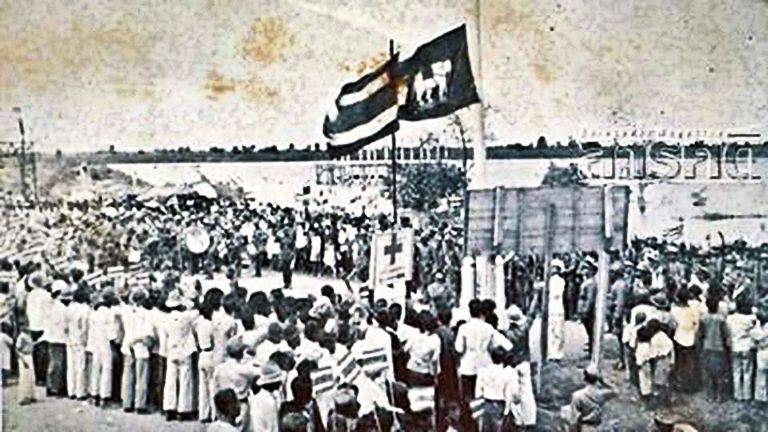
By this time, the Thai armed forces far exceeded the French colonial troops stationed in Indochina. If the number of French troops was approximately 50 thousand soldiers and officers, then 60 thousand people served in the Thai army. In addition, the Thai army was superior in armament, as in the French colonial troops there was virtually no armored vehicles. The French had only 20 obsolete tanks Renault FT-17, while the Thai army had 60 Carden-Loyd Mk VI tankettes and 30 Vickers Mk E light tanks. The Thai armed forces had significant superiority in the air. Against the French troops, the Thai Air Force command planned to deploy 109 bombers and 25 fighters. As a result of the actions of the Thai Air Force, which launched the bombing of Vientiane, Phnom Penh and several other cities, the infrastructure of French Indochina was significantly damaged. On land, Thai troops also quickly pressed the French. Soon, Thailand occupied almost all of Laos and a large part of Cambodia.
In the end, Japan intervened in the situation, which was sort of like an ally of the French Vichy government. With Japanese mediation, a peace agreement was concluded in Tokyo. In accordance with it, imposing territories were ceded to Thailand - the Cambodian provinces of Battambang and Pailin, Kohkong, Siem Reap, Banteaymeantiya and Oddarmeantiya, Preahviheya, as well as the Lao provinces of Nakhontymasak, Sayababuli and part of Luang Pkhangang province.
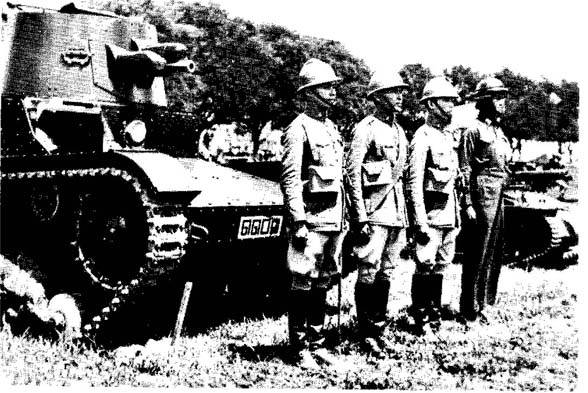
Since the Thai army was quite easily able to defeat the French colonial troops stationed in Laos and Cambodia, the Japanese command, interested in establishing control over the territory of Thailand, did not dare to attack the country for a long time. Since the Japanese considered the territory of Thailand exclusively as a “springboard” for the seizure of the British colonies of Burma and Malaya, it was important for the Japanese command that the imperial army units deployed in Thailand did not suffer serious losses in battles with the Thai army. If the Thai armed forces would seriously resist the Japanese forces, the latter could “get bogged down” in Thailand for a long time, which would have negative consequences for Tokyo’s plans to invade Burma and Malaya.
For the Japanese government, the best way out would be to establish allied relations with Thailand, so that Bangkok would agree to simply let Japanese troops pass through its territory and allow the use of military infrastructure. Certain circumstances allowed one to hope for such an outcome of events, and above all, the policy of General Pibonsongram, who was ideologically close to the Axis countries and himself had a negative attitude towards the British colonial presence in Indochina and Malaya. In October, 1940, Pibunsongram even promised the Japanese command to support Japanese forces in the battle of Malaya. However, as a pragmatic person, he simultaneously negotiated with the governments of Great Britain and the United States of America, because he understood that Japan could not limit itself to passing through the territory of Thailand, but simply occupy the country. The British leadership promised Pibunssongram support in the event of a Japanese invasion.
Uncertainty in relations with Thailand ultimately led the Japanese command to make a decision to invade the country.
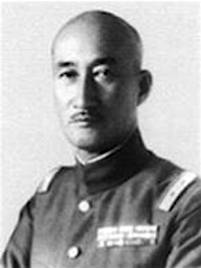 In Tokyo, they were worried that Bangkok would sooner or later make an alliance with Great Britain, and then the situation in Indochina would be much less advantageous for the Japanese. General Terauti Hisaichi (1879-1946, pictured), commander of the Southern Army Group of the Japanese Imperial Army, ordered the invasion of Japanese troops into the territory of Thailand. 8 December 1941, part of the Imperial Guards Division, which was part of the 15 Army, invaded Thailand near the province of Battambang. At about the same time, on the morning of December 8, subunits of the 3 Battalion of the Imperial Guards Regiment landed in Samut Prakan and were tasked with securing Bangkok. However, the Japanese did not enter into a clash with Thai units.
In Tokyo, they were worried that Bangkok would sooner or later make an alliance with Great Britain, and then the situation in Indochina would be much less advantageous for the Japanese. General Terauti Hisaichi (1879-1946, pictured), commander of the Southern Army Group of the Japanese Imperial Army, ordered the invasion of Japanese troops into the territory of Thailand. 8 December 1941, part of the Imperial Guards Division, which was part of the 15 Army, invaded Thailand near the province of Battambang. At about the same time, on the morning of December 8, subunits of the 3 Battalion of the Imperial Guards Regiment landed in Samut Prakan and were tasked with securing Bangkok. However, the Japanese did not enter into a clash with Thai units. Meanwhile, units of the 1 Battalion of the 143 Infantry Regiment of the Imperial Army invaded Chumphon. Unlike other Japanese units, they were faced with a serious confrontation by the Thai forces stationed in the area. On the night of 7 on December 8, the 3 battalion of the 143 infantry regiment and the 18 airborne regiment of the imperial army landed in Nakhon Si Thammarat on the night of 6. They were opposed by the headquarters of the Royal Thai Army's 30 Division and the Royal Army's 8 Infantry Battalion. The Thai soldiers immediately fought with the Japanese paratroopers. Parts of the royal army continued fighting with Japanese troops until December 12 noon and ceased firing only after the relevant order of Prime Minister Pibunssongram was received. Japanese paratroopers met fierce resistance during the landing at Pattani. Here the 42 th infantry battalion of the royal army, commanded by Khun Inkhhatborikharn, who was killed in this battle, entered into battle with the Japanese. Another Japanese unit, the 2 Battalion of the 143 Regiment, landed at Prachuapkiri Khan, where the airfield and 5 squadron of the Royal Thai Air Force were located. Here the Japanese managed to defeat the local garrison relatively quickly and establish control over the city. However, the Japanese did not succeed in capturing the airfield; the resistance of the Thai pilots and the aerodrome service unit turned out to be so bitter. The defenders of the airfield fought until they received an order from the Prime Minister to cease fire.
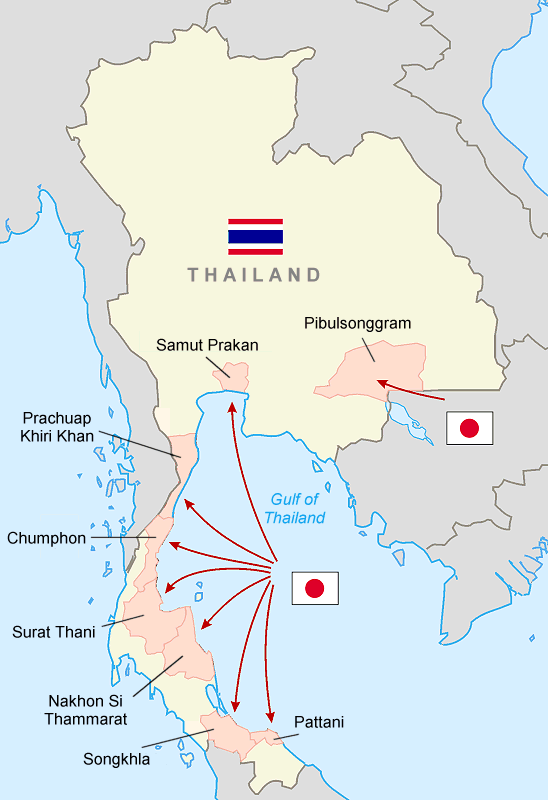
In Khaokhorhong, the Thai 41 Infantry Battalion and the 13 Artillery Division took up positions on the roads to Malaya, preparing to repel an attack by Japanese paratroopers. These units then retreated to Khatyai, where the next clash between Thai and Japanese forces occurred. The fighting continued, as in other parts of the country, until noon, when a cease-fire order was received. The country's prime minister, Pibunssongram, made a decision that was quite beneficial for Thailand not to get involved in the war with Japan, which promised to be extremely bloody and difficult for the country, but entered into negotiations with the Japanese command and soon concluded an armistice. Japanese troops were able to use Thai territory to attack Malaya.
21 December 1941, the Prime Minister Pibunsongram concluded an allied treaty with Japan. So Thailand became the only sovereign state of Southeast Asia, which turned into an ally of Japan in World War II. Following the signing of the union treaty, an even more radical step followed - 25 January 1942, the Thai government declared war on Britain and the United States of America. However, this decision of Prime Minister Pibunsongram caused an extremely negative reaction from a significant part of the representatives of the Thai political elite.
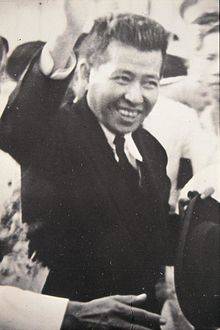 Many high-ranking officials were convinced that declaring war on Britain and the United States was against Thailand’s national interests. They were convinced that the Japanese would sooner or later be defeated by the allies, and then Thailand would have to be responsible for the actions of its prime minister. Foreign Minister of Thailand Comedi Panomiong (1900-1983) resigned in protest against the declaration of war. Panomiong (pictured), who was considered a liberal and pro-Western politician, was very unhappy with Pibunssongram's irresponsible step and even decided to leave such a serious state post. The Thai ambassador to the United States Seni Pramot also sharply criticized the declaration of war, who even refused to recognize the declaration of war as valid and did not turn it over to representatives of the American diplomatic department.
Many high-ranking officials were convinced that declaring war on Britain and the United States was against Thailand’s national interests. They were convinced that the Japanese would sooner or later be defeated by the allies, and then Thailand would have to be responsible for the actions of its prime minister. Foreign Minister of Thailand Comedi Panomiong (1900-1983) resigned in protest against the declaration of war. Panomiong (pictured), who was considered a liberal and pro-Western politician, was very unhappy with Pibunssongram's irresponsible step and even decided to leave such a serious state post. The Thai ambassador to the United States Seni Pramot also sharply criticized the declaration of war, who even refused to recognize the declaration of war as valid and did not turn it over to representatives of the American diplomatic department. Instead of the outgoing foreign minister, Panomiong, Prime Minister Pibunssongram appointed Wichit Wichitvathak, the foreign minister, who occupied 1938-1942. the post of Minister of Culture and known as the ideologue of the right-wing forces of Thailand. Pibunssongram and his associates were convinced that declaring war was the right step, as it allowed the Thai army to take part in hostilities on the side of Japan and created the preconditions for the seizure of new territories by Thailand. In 1943, Japan transferred to Thailand the two principalities of the Shan region in Northeastern Burma, which was of great importance to Pibunssongram, since the Shans also belonged to the Thai peoples. In addition to the Shan principalities, the principalities in the north of Malaya were also transferred to Thailand, which, according to Pibonsongram, also formerly entered into the orbit of influence of the Siamese state.
However, for the Thai people, the effects of the Pibunsongram policy were rather negative. The Japanese occupation led to the deaths of thousands of Thais who were mobilized into the labor armies for the construction of military infrastructure. The economic situation has sharply worsened. In the end, the Free Thailand movement was created, led by opposition politicians Seni Pramot and Pridi Panomiong. In the end, in July, the 1944 parliament passed a vote of no confidence in Pibunssongram. He was forced to resign as prime minister of the country, retaining, however, the post of commander-in-chief of the armed forces. A much more moderate politician, Kuang Apayvong (1902-1968), an officer of Khmer origin, who previously served in the personal guard of the king, became the new head of government. His government began to establish contacts with the countries of the anti-Hitler coalition, trying to get out of the war with minimal losses. In connection with the defeat of Japan, the Thai government appealed to the countries of the anti-Hitler coalition for peace. 1 January 1946 was signed a peace treaty, according to which the country was deprived of all acquired in 1941-1943. land and paid a contribution of Great Britain. General Pibunsongram tried to judge as a war criminal, but the court acquitted him. In 1948, he returned to power in the country, this time safely reorienting to cooperation with the United States - under anti-communist slogans.
Information